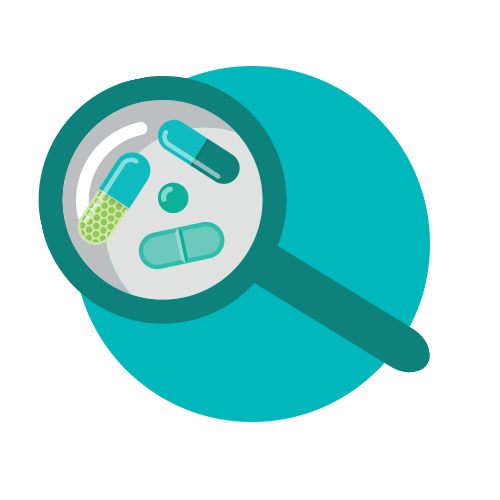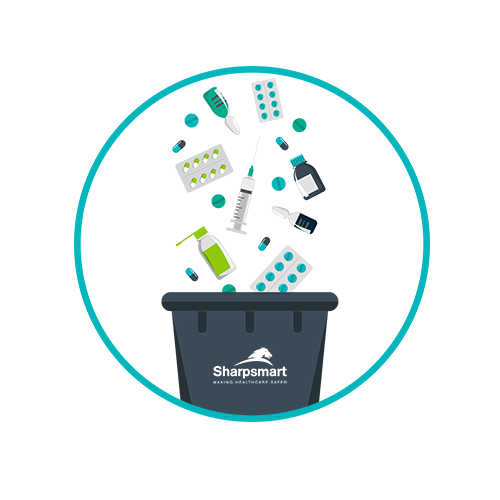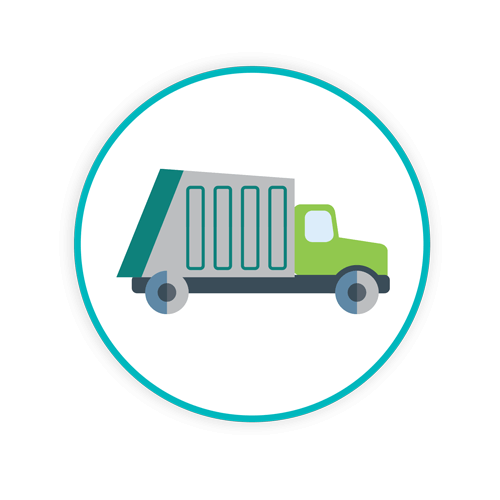Pharmaceutical Waste Disposal Guidelines

Proper disposal of medicines is not only important for compliance but in consideration of public safety and the environment. Improperly disposed of pharmaceuticals end up in places they shouldn’t be.
Hospital-based and community pharmacies must follow regulatory guidelines for pharmaceutical waste disposal or risk fines, damage to reputation, and may even face legal action.
Pharmacies are charged with duty of care when it applies to the identification of pharmaceutical waste streams and classifications, observe rules regarding packaging and labelling, and proper destruction methods - especially in regard to controlled drugs. Disposal of such drugs must comply with the guidelines of environmental protection legislation.
TOPICS WE WILL COVER:
1 / Defining pharmaceutical waste
2 / Determining the pharmaceutical waste disposal processes
3 / Pharmaceutical waste storage guidelines
5 / Pharmaceutical waste disposal and transporting carriage regulations
6 / Be knowledgeable, stay compliant
7 / Sharpsmart offer solutions
 Defining pharmaceutical waste
Defining pharmaceutical waste
Correctly identifying pharmaceutical waste is the starting point for compliant pharmaceutical waste disposal. Pharmaceutical waste is defined as any medicine or drug that is unused, expired, contaminated, damaged, or is no longer needed.
Based on the Department of Health’s Health Technical Memorandum (07-01: Safe Management of Healthcare Waste) the pharmacy has “a statutory duty of care. This applies to everyone in the waste management chain from producer to disposer. It requires that the waste be managed and that all reasonable measures are taken to ensure that the waste is dealt with appropriately from the point of production to the point of final disposal.”
Also note that the responsibility of a pharmacy does not end when a waste collector has picked up their waste. It is the responsibility of the pharmacy and not the waste contractor to ensure full compliance.
Pharmaceutical waste disposal guidelines specify that waste must be correctly:
- Segregated
- Labelled
- Packaged (for transport)
- Stored
- Documented
-
Transferred (to authorised waste site)
Additional guidelines for community pharmacies also require that unless exempt, hazardous waste producers and premises be registered, and that documentation and records must be kept up-to-date and maintained, typically on the premises of the pharmacy.
Training is also an important aspect of the waste stream process for pharmaceuticals, especially ensuring that every employee is aware of waste procedures.
Determining the pharmaceutical waste disposal processes
 Actual pharmaceutical waste disposal processes are based on the type of waste being disposed of, such as:
Actual pharmaceutical waste disposal processes are based on the type of waste being disposed of, such as:
- Cytotoxic waste
- Cytostatic waste
- Out of date pharmaceutical stock
-
Unused pharmaceutical stock
Proper identification of the characteristics of pharmaceutical properties is essential for segregation and classification for disposal. Guidelines found in the Health Technical Memorandum regarding classifications of waste medicines from community-based pharmacies are clear. For example:
Pharmacies are required to segregate waste medicines into one of two categories: cytotoxic/cytostatic medicines, or “other medicines”; It is also the responsibility of the pharmacy to ensure that waste is properly packaged and labelled for transport; That the pharmacy is also able to correctly quantify subgroups, even if not fully segregated. These subgroups include but are not limited to:
- Cytotoxic and cytostatic waste from human or animal healthcare
- Cytotoxic and cytostatic from domestic household patient returns
- Other medicine from human or animal healthcare
-
Other medicine from domestic household patient returns
Guidelines in the Memorandum are also provided for medicines along with specific instructions for handling wrapped or single-use monitored dosing systems (MDS).
In order to maintain compliance, every pharmacy needs to define standard operating procedures for dealing with unwanted household medicines to ensure that they’re properly segregated and stored. Since domestic household medicines are not subject to the prohibition on mixing, they’re often returned mixed with other medicines. Pharmacy staff must take conscious effort to segregate the medicines while observing safety measures for handling such returns.
Pharmaceutical waste storage guidelines
Prior to disposal, pharmacies must also comply with storage guidelines and consider three primary issues of pharmaceutical waste, such as:
- Medicine returns from domestic households;
- The pharmacy’s own medicinal waste;
-
Returns from a medical practice or other nondomestic sources
Such medicines are exempt from requirements for environmental permits and don’t need to be registered, but specifications apply. For example, pharmacies that temporarily store their own medicine waste (under exemptions from an environmental permit) at the premises must follow guidelines and all of the following conditions must apply:
- Storage is in a secure location
- Storage is located at the premises of production
-
Storage extends for no longer than 12 months
About controlled drugs
While pharmaceuticals should always be properly segregated, labelled, packaged, and stored prior to disposal, special attention is paid to controlled drugs. Based on the guidelines of the Health Technical Memorandum, pharmacies are required to comply with the following legislative guidelines applicable to controlled drugs:
- Misuse of drugs regulations
- Misuse of drugs (safe custody) regulations
-
Controlled drugs (supervision of management and use) regulations
Each of the above regulation aspects specify requirements for storage of controlled drugs. Step-by-step processes for pharmacy controlled drug waste that is returned from other producers including that from patients or domestic premises are also provided.
Denaturing guidelines are specific. Some drugs may be denatured under exemptions from environmental permits or licenses, although those exemptions must be registered with the environmental regulator.
 Pharmaceutical waste disposal and transporting carriage regulations
Pharmaceutical waste disposal and transporting carriage regulations
Follow guidelines when it comes to transport and carriage regulations as well as documentation. Pharmacies are generally deemed as a cosigner under the carriage regulations and requirements for disposal.
For example, carriage regulations state that unopened medicines should remain in their original packaging (such as expired medicines) and are exempt, but specific guidelines apply to partially opened packages or blister packs. Some waste medicines (including amalgam waste) are typically restricted by quantity and must be marked accordingly.
Sharps bins or receptacles must comply with sharps packaging guidelines found under the carriage regulations (paragraph 7.34). Pharmacies can also refer to guidance documents for transporting of solid medical or clinical waste, category A (ADR M317) regarding temporary exemption to regulations.
Be knowledgeable, stay compliant
Pharmaceutical facilities, regardless of size or location, should always follow good practices in dispensation, collection, and disposal of pharmaceuticals. The Royal Pharmaceutical Society of Great Britain also provides specific guidelines for denaturing controlled drugs. Such drugs should be disposed of as a waste medicine classified under the appropriate type. Refer to the RPS for additional information as well as their downloadable guide on Medicines, Ethics and Practice (MEP) available to members.
Sharpsmart offer solutions
Sharpsmart provides solutions for pharmaceutical manufacturers and dispensaries. We’re devoted to protecting not only pharmaceutical employees, but the general public and the environment. We focus on waste reduction and provide resources and solutions that focus on safety and compliance when it comes to pharmaceutical waste disposal and services. Call us today for assistance in categorising pharmaceutical waste and proper disposal methods.

